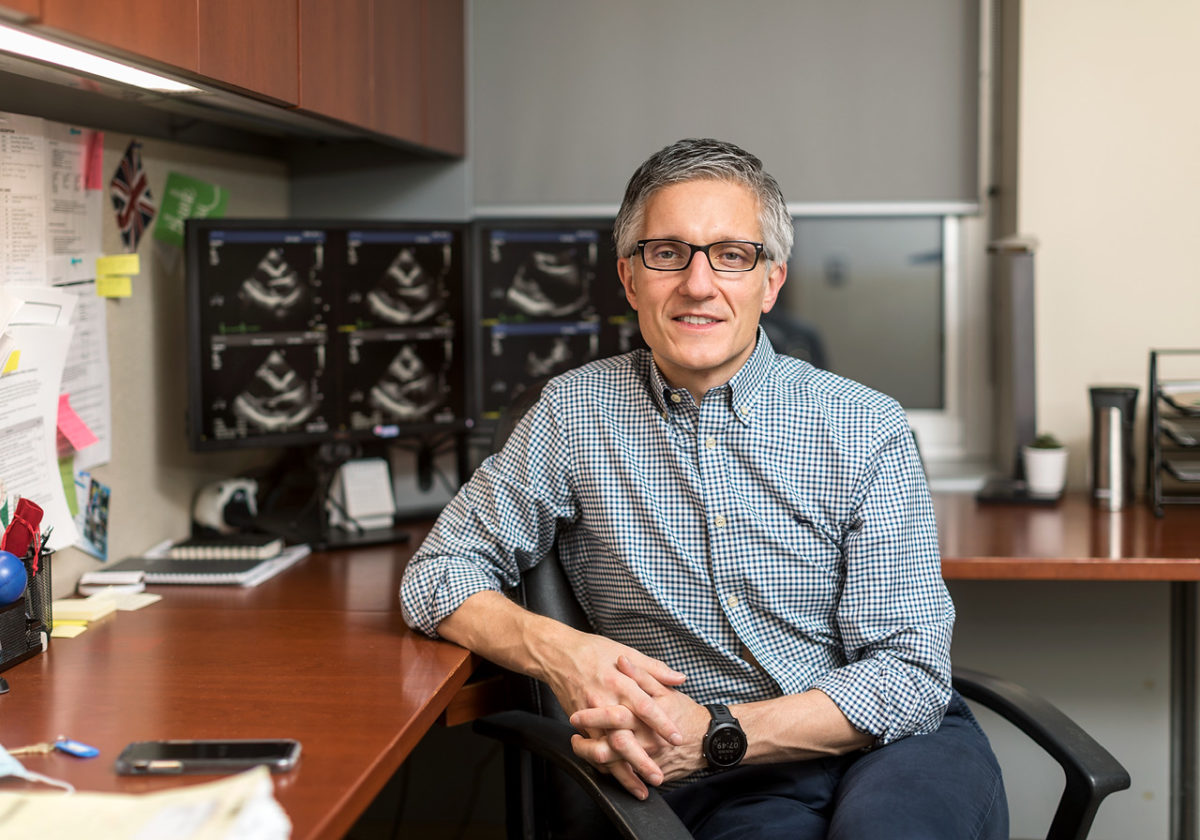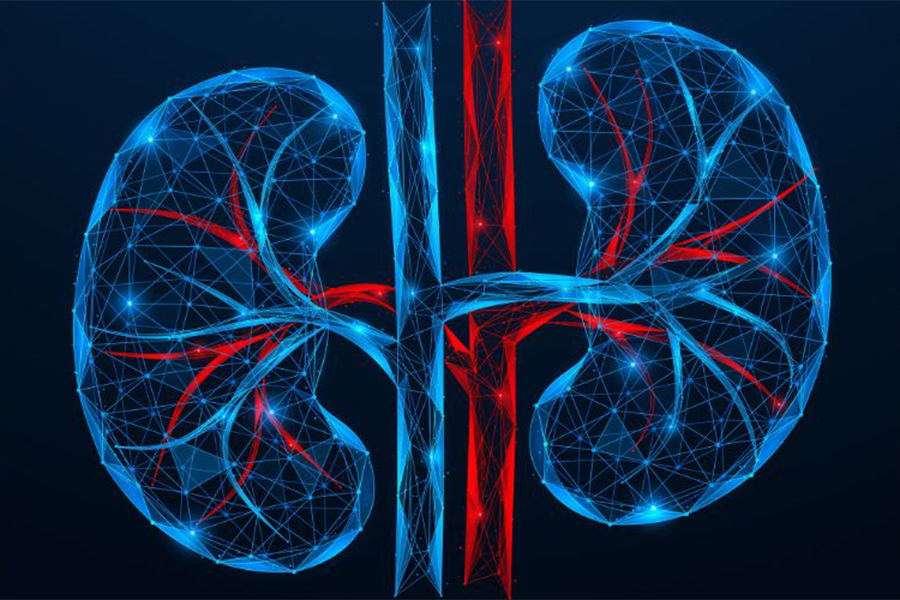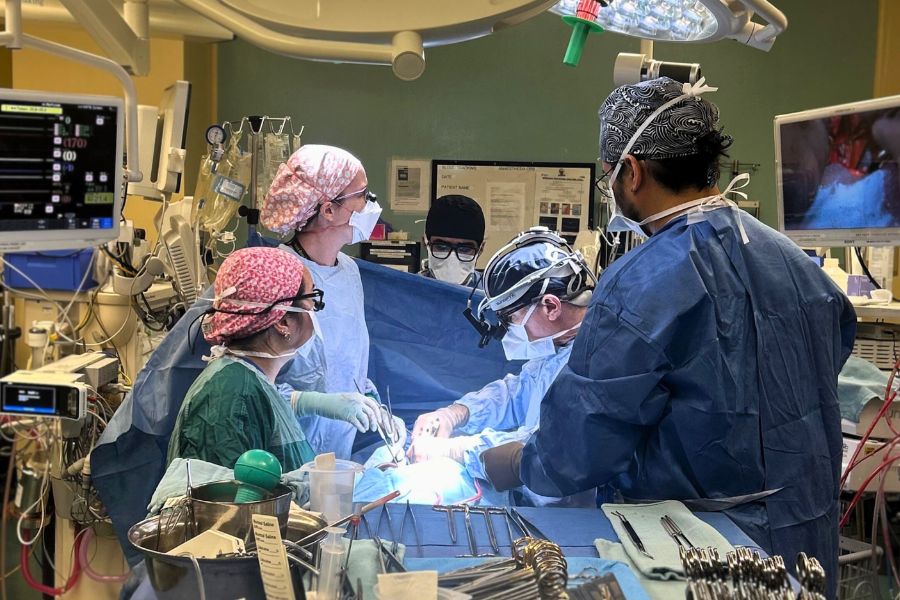Michael Bannock Jr. will live with congenital heart disease and be under the care of Peter Munk Cardiac Centre physicians for his entire life.
By Wendy Haaf
Care doesn’t stop for people with congenital heart disease.
College can be stressful at the best of times, but in 2019, when Michael Bannock Jr. was midway through his studies in radio broadcasting, the aspiring sports reporter had a lot more on his mind than exams. Born with congenital heart disease, Bannock was at risk of developing complications from the life-saving operation he underwent before his first birthday. “As a teenager, I was told I was going to need another major surgery, which was a scary thought,” he says. Now at 24, the time for that open-heart surgery had come.
Bannock is one of 257,000 Canadian adults alive today whose hearts didn’t develop normally before birth. These individuals have congenital heart disease and must be monitored their entire lives. Most will require additional procedures to keep their hearts functioning as they grow older.
Bannock came to the Peter Munk Cardiac Centre’s Adult Congenital Heart Disease (ACHD) Program from Toronto’s SickKids when he was 18. The long-ago repair to widen a narrow valve in Bannock’s heart only partially worked. For years, his right heart-pumping chamber had been forced to work harder to cope with the “backup,” causing it to grow abnormally large. Without an operation to replace the valve, the heart muscle could get too weak to do its job, leading to heart failure, which carries an average life expectancy of 2.1 years from diagnosis. “We didn’t want to get to a point where they couldn’t operate,” Bannock recalls.
For Bannock’s cardiologist, Dr. Rafael Alonso, who is also Fellowship Director and Lead in Transition for the ACHD Program at the Peter Munk Cardiac Centre, the fact that Bannock, at 24, could have surgery is a major success story. In 1959, 80 per cent of babies born with congenital heart disease died before turning 18. Thanks to corrective surgeries, 98 per cent of people born with a heart defect now survive well into adulthood.
A lifelong journey
In fact, thanks to advances made at the Peter Munk Cardiac Centre, these surviving adults now outnumber the children born with congenital heart disease. However, as the number of people with congenital heart disease has grown, so too has the need to help these individuals live life to its fullest. The ACHD Program, which is one of the first and largest in the world, does exactly that. For example, psychologists, nurses and nurse practitioners provide support for dealing with body image issues due to surgical scars. The team also guides young adults with congenital heart disease through important life decisions, including providing information on whether an individual’s condition may preclude certain careers.
The ACHD Program’s highly specialized cardiology team also has a wealth of expertise in providing followup care to prevent and treat health problems that can come with the condition. For instance, people with congenital heart disease run a higher risk of developing heart rhythm disorders, leaky valves and heart failure.
This is why people living with congenital heart disease need ongoing care from a highly specialized cardiology team. At the ACHD pregnancy clinic, for example, physicians ensure a woman’s heart condition remains stable throughout pregnancy and birth. “We have a multidisciplinary team that works with these patients, from obstetrics and cardiology to pulmonary hypertension,” says Dr. Alonso.

World-leading program
The Peter Munk Cardiac Centre has made a significant effort to become a world-leading ACHD Program, because as soon as someone becomes a patient, they’re under the team’s care for life. “About 200 patients per year come to us, and few can be discharged,” notes Dr. Alonso.
It’s crucial that the transition from pediatric to adult care is a smooth one. If teens with congenital heart disease fall through the cracks, their disease can worsen with potentially deadly consequences. A new collaborative initiative between the Peter Munk Cardiac Centre and SickKids – the Transition and Transfer Program – is designed to keep this from happening.
This transition marks the beginning of a lifelong partnership between the patient and the Peter Munk Cardiac Centre. With patients living longer, many end up dealing with challenges clinicians never considered before. That presents an opportunity to hone expertise and train new generations of congenital heart disease subspecialists in fields ranging from cardiology and cardiac surgery to imaging and electrical heart rhythm abnormalities. All this leads to better care while also allowing the ACHD Program to share knowledge in the field. The Peter Munk Cardiac Centre can train at least nine congenital heart disease fellows per year, funded through philanthropy.
In the summer of 2019, Bannock headed to the operating room, where surgeons inserted a new valve in his heart. It will need to be replaced every 10 to 20 years, but Bannock is skiing and golfing again and anticipates a return to college. “I’m grateful to my family, who were there every day,” he says. “I’m also thankful for the doctors and nurses, and my recovery team for helping me get back to being myself after surgery.”
Still, there’s no way of knowing what kinds of challenges Bannock and others with congenital heart disease will encounter during their journey. There are issues physicians haven’t even seen yet, many of which will arise as more patients live longer. No matter what happens, the Peter Munk Cardiac Centre is helping its patients every step of the way.


This article originally appeared in the 2021 Peter Munk Cardiac Centre annual report. Read it here.
Photos by Tim Fraser.


